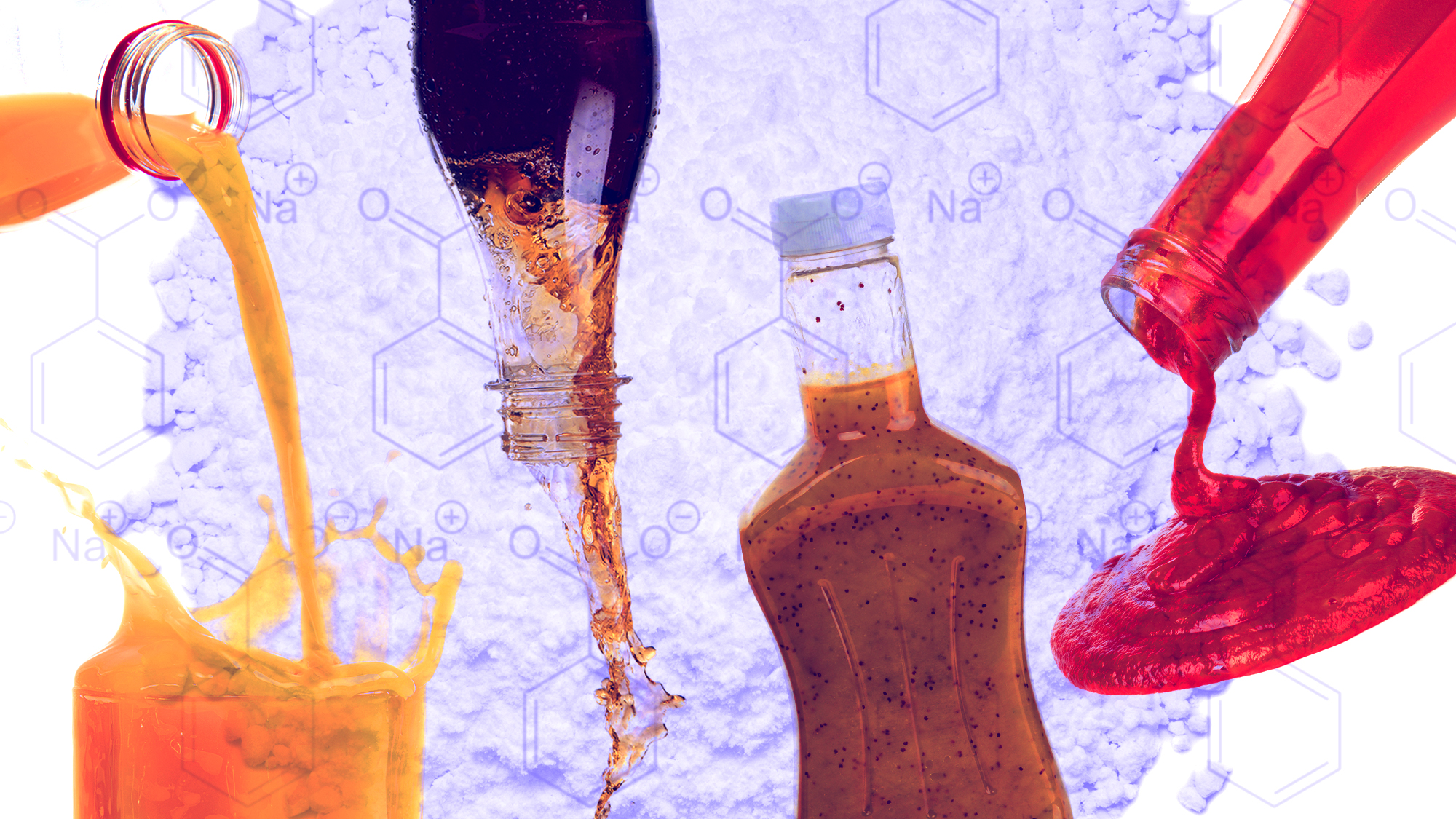What Is Sodium Benzoate, And Why Is It In My Food?
Welcome to another installment of Ingredients Decoded, where we check out the ingredient label of packaged food, arbitrarily select something we don't understand or cannot pronounce, and figure out what it actually is. Is it good? Is it bad? We don't know! That's something that scientists and "wellness gurus" can argue about. We just want find some basic answers so that you may jump to your very own wild conclusions.
This week we're looking at sodium benzoate, which is found in sodas, salad dressings, salsas, soy sauce and other things that are acidic. It's synthesized in a lab from benzoic acid—a natural preservative—and sodium hydroxide, which helps it dissolve when added to water-based substances. Benzoic acid is naturally occurring; you can find it in fruits, berries, and spices like cloves and cinnamon. You've probably heard of sodium hydroxide before by it's more common name, lye, which is a highly caustic base. It's highly poisonous on its own but, as anyone who has ever made a baking soda volcano can tell you, when combined with an acid, it's pH changes into something that won't cause excruciatingly painful chemical burns.
Once synthesized, sodium benzoate inhibits the growth of yeast, mold and nasty bacteria that could grow and thrive in acidic conditions. When it combines with asorbic acid—a.k.a. vitamin C—if can cause a reaction that produces benzene, which is a component in gasoline. This is one of the many fearmongering-friendly factoids you'll read about sodium benzoate in "holistic medicine" resources, which don't take into account the fact that, in food and beverages, it's used in extremely low concentrations—normally around 0.025%.
Sodium benzoate can also be found in non-edible things such as cosmetics, shampoo, fireworks. Remember: just because something is found in both edible and non-edible things doesn't mean that your food is actually made out of fireworks. (We're looking at you, Panera Bread.)
